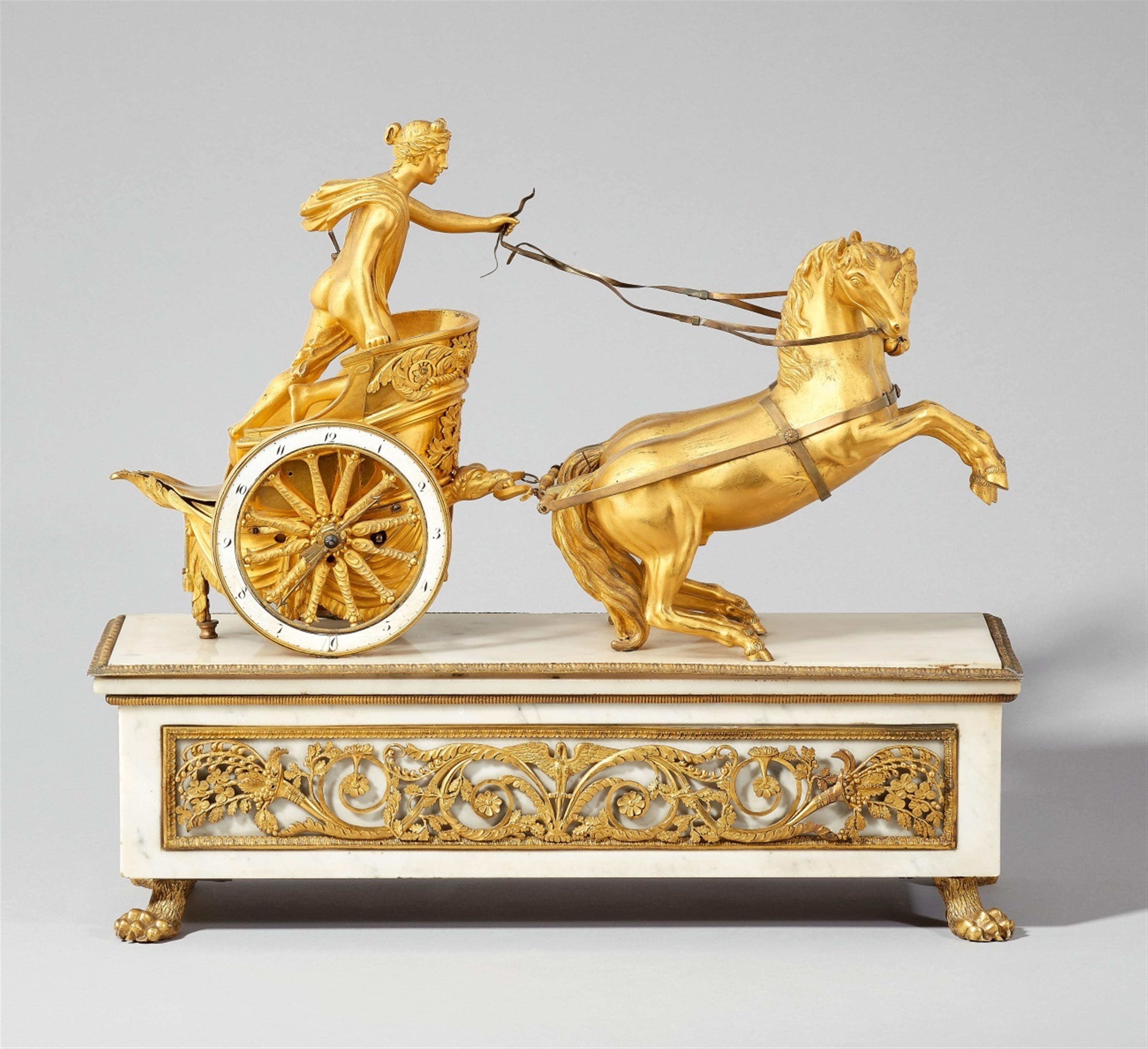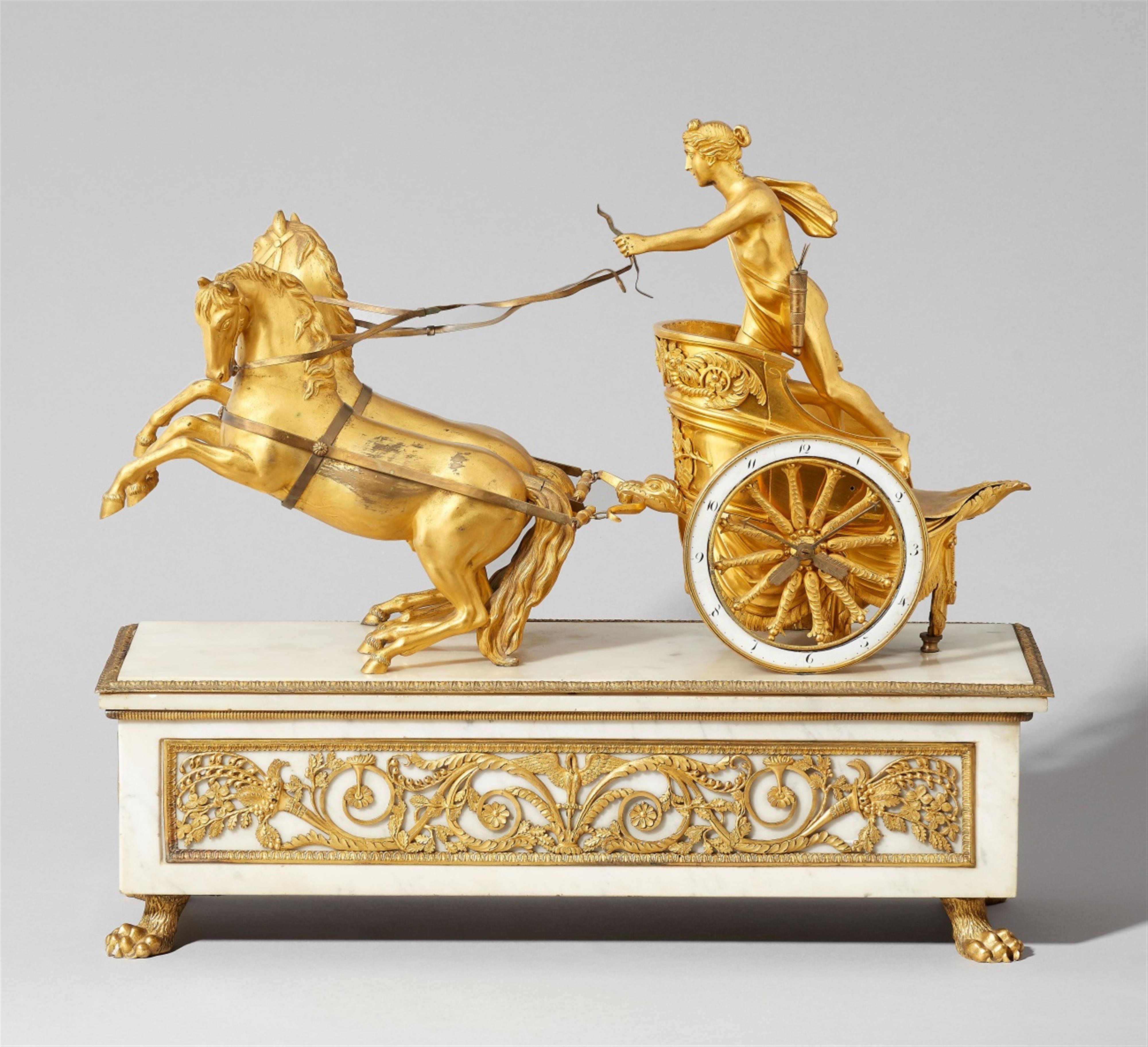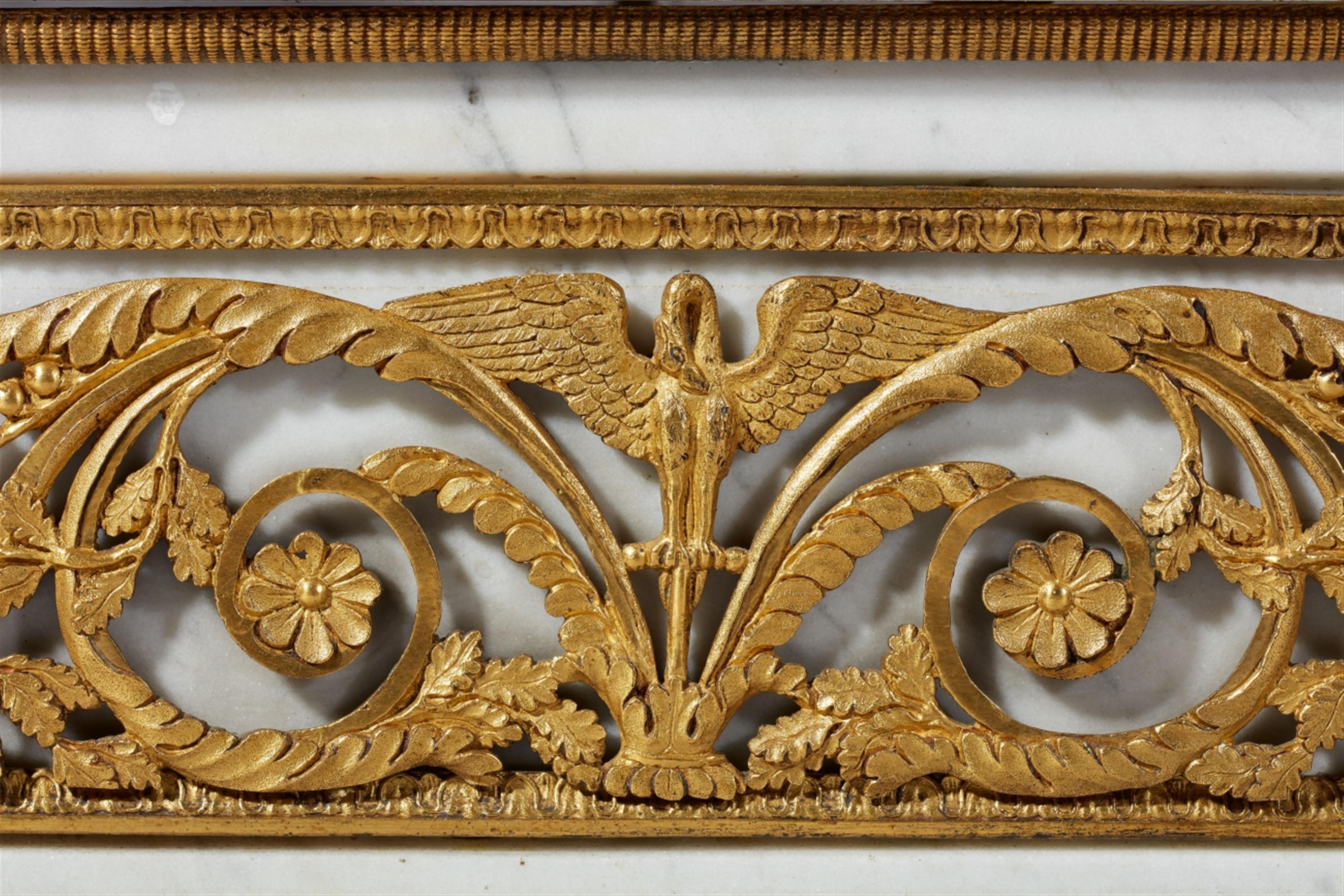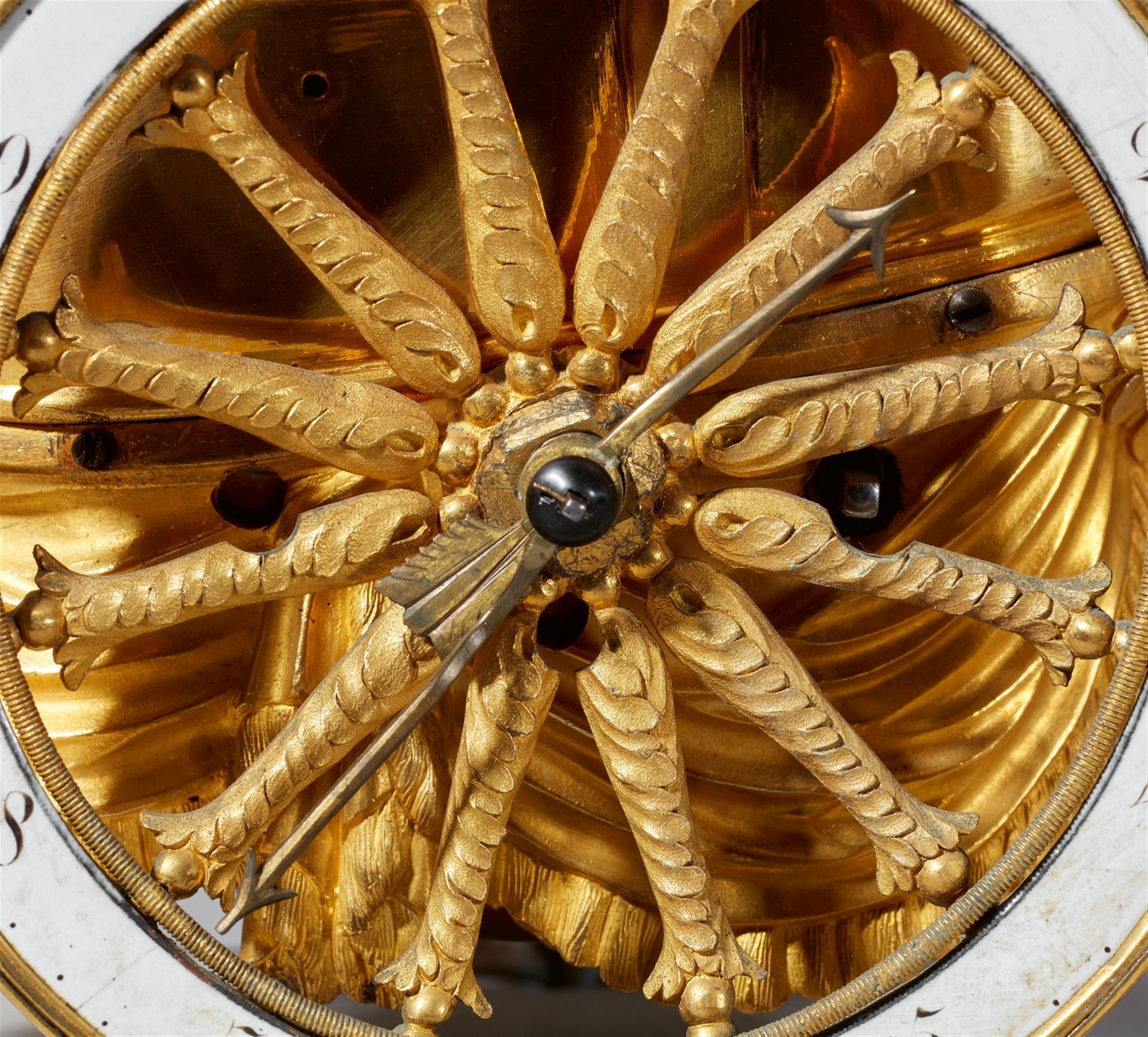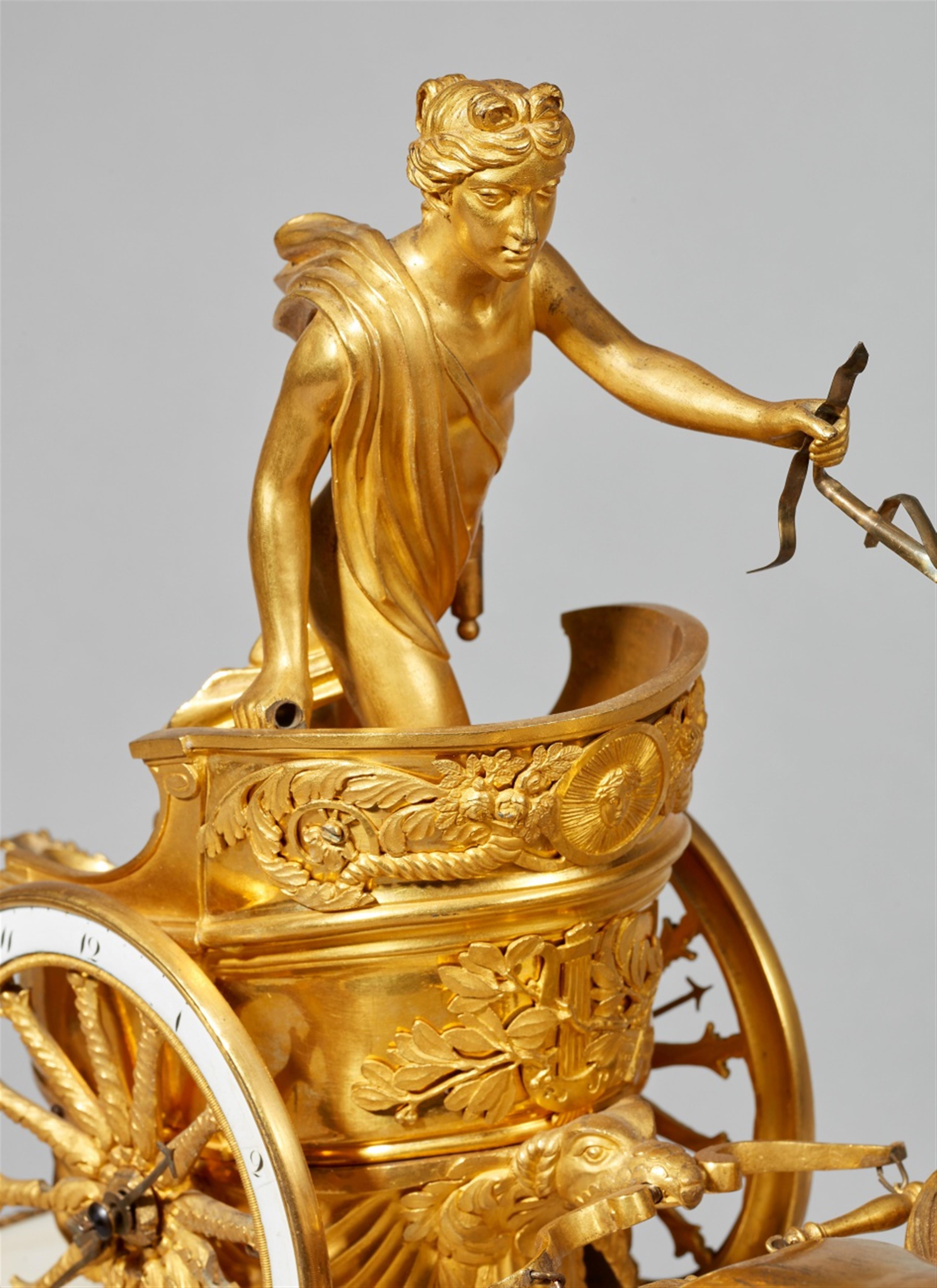An Italian Empire pendulum clock
Ormolu clock on a white marble base with a white enamel dial and Arabic numerals. The originally symmetrical hands in the hubs of the chariot wheels. Designed as a finely chased, androgynous figure of Diana in a chariot pulled by two horses, with pierced relief appliques to four faces. The movement in need of repair, one relief applique loose, one of the attributes of Diana lost, the reins broken. H 42, W 47, D 17 cm.
Fonderia Napoleonica Eugenia / Fonderia Manfredini, after 1806.
The Fonderia Napoleonica Eugenia was founded in Milan in 1806 by the brothers Francesco, Luigi and Antonio Manfredini, who came from Bologna. The foundry was named after the Italian viceroy Eugène de Beauharnais. Francesco, the eldest brother, was the king's court watchmaker and jeweller, Luigi was a sculptor and medal caster. Many of the magnificent clocks from the foundry can still be found in Milanese museums today. Among them is the famous clock of the Muse Polymnia, now in the Museo del Novecento in Milan. Another famous clock depicts the hunt of the goddess Diana, dated between 1808 and 1814 at the latest. The Fondazione Querini Stampalia in Venice and Palazzo Isimbardi in Milan also own clocks from the Fonderia Manfredini. The proximity to contemporary French productions such as those of Claude Galle (1759 - 1815) and Pierre-Philippe Thomire (1751 - 1843) is clearly evident in all the bronzes. Franceso Manfredini must have studied the designs of these workshops during his time in Paris. The foundry was closed in 1853 after the death of the three brothers.
Literature
Cf. The signed chariot pendulum clock in theFondazione Querini Stampalia (in: Colle/Griseri/Valeriani, Bronzi Decorativi in Italia, Milan 2001, p. 288 f.) Cf. also a similar French model in: Tardy, La Pendule Française. 2ème partie. Du Louis XVI à nos jours, Paris, 1969, p. 377.

